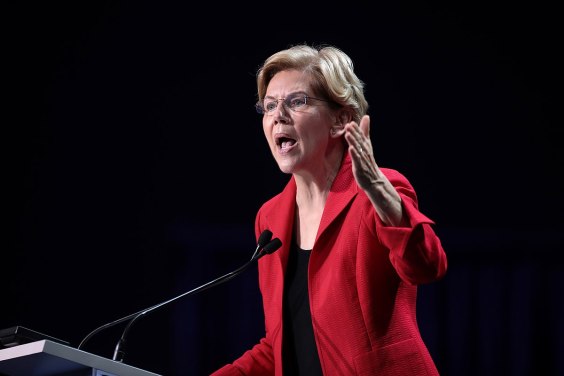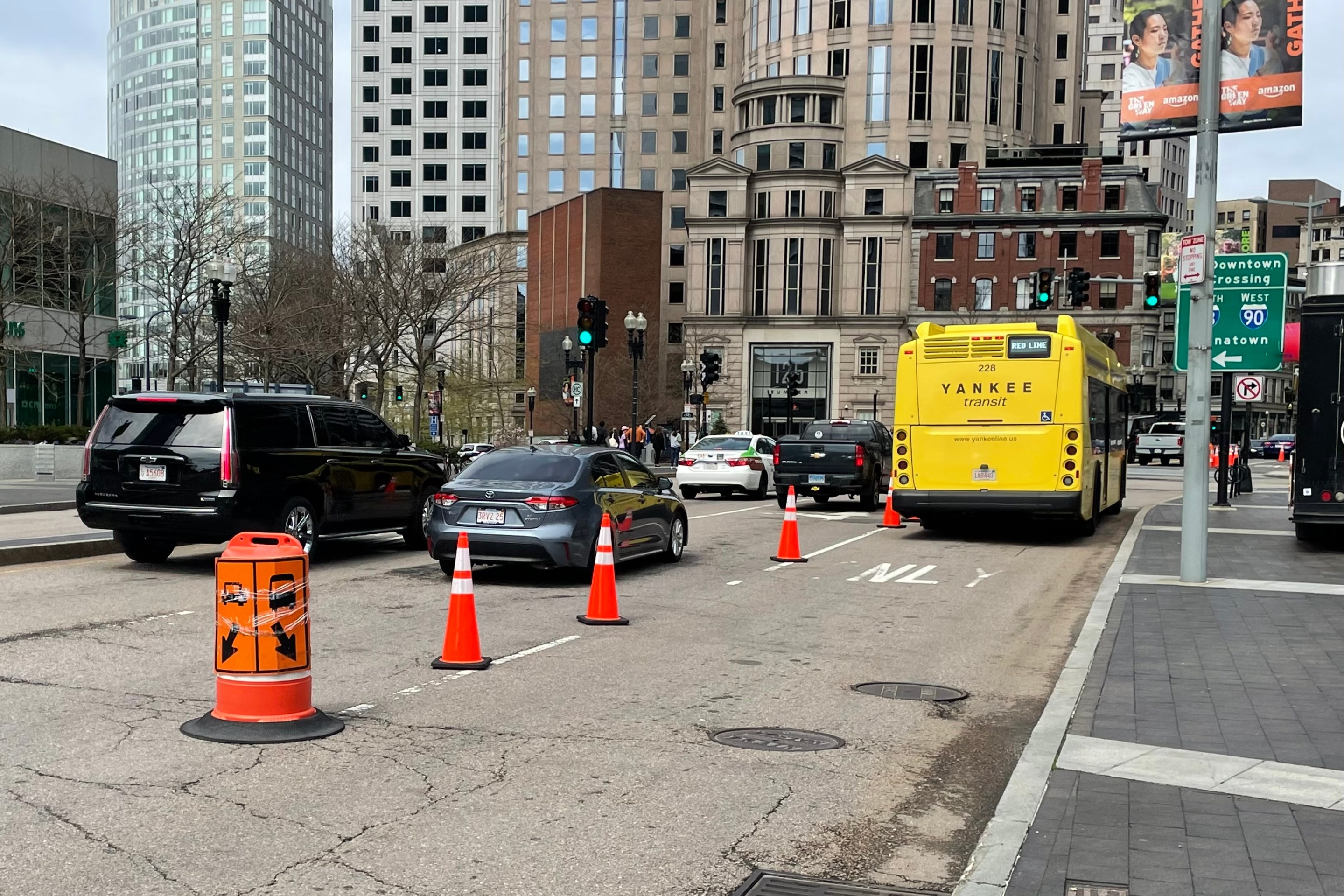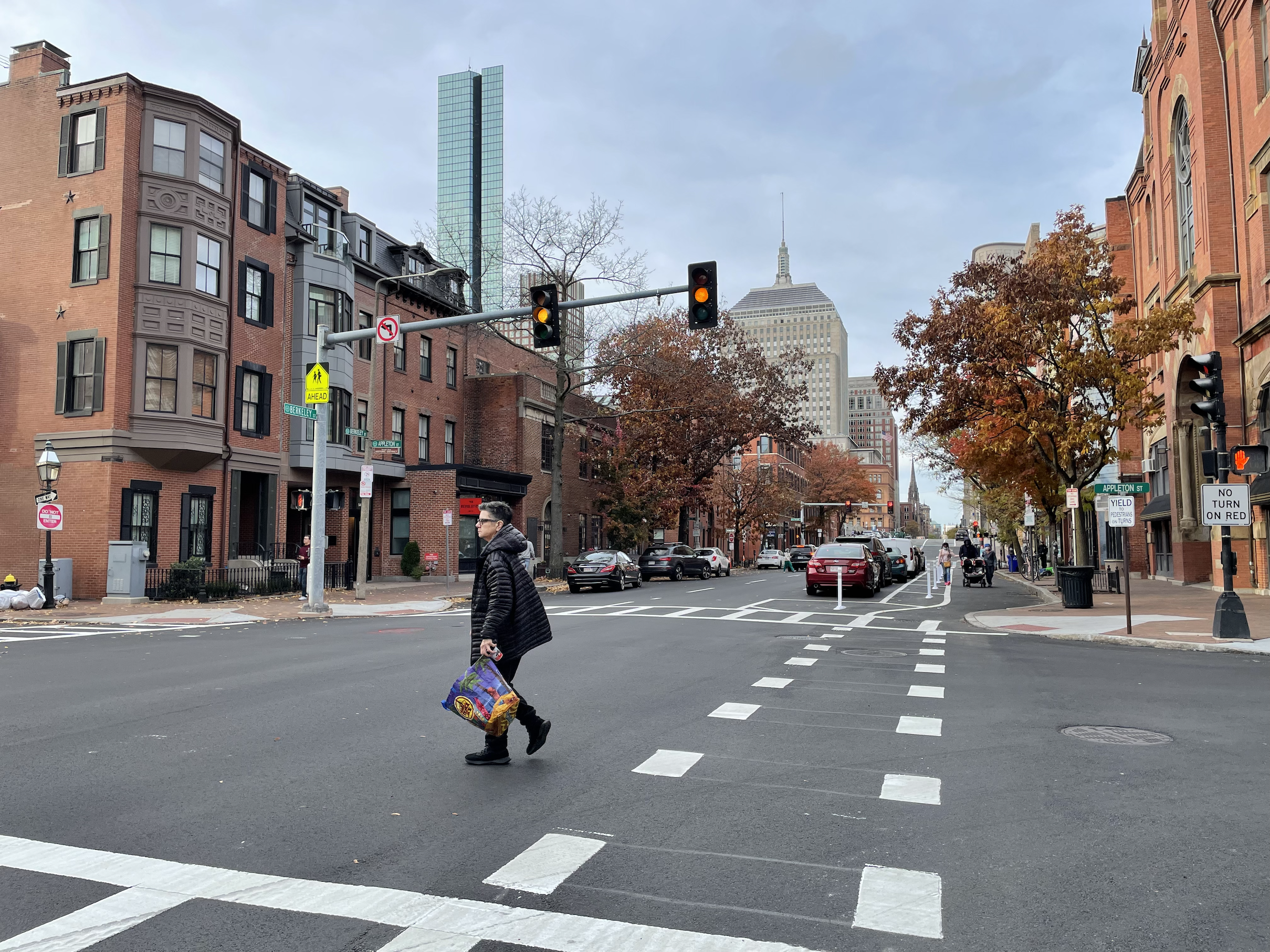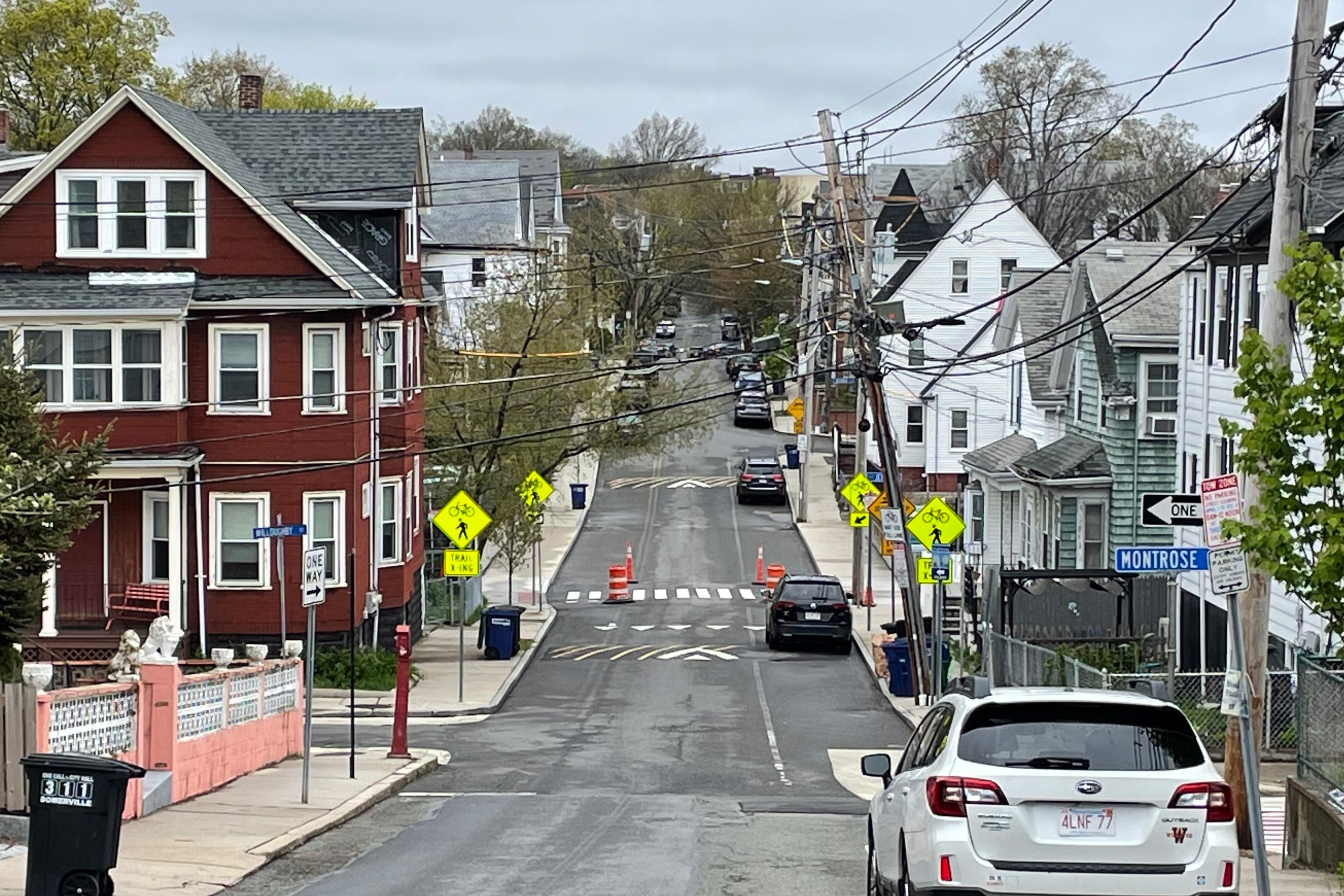US DOT Promises National Safe Systems Approach After Surge in Motorist Killings
10:09 AM EDT on November 1, 2021
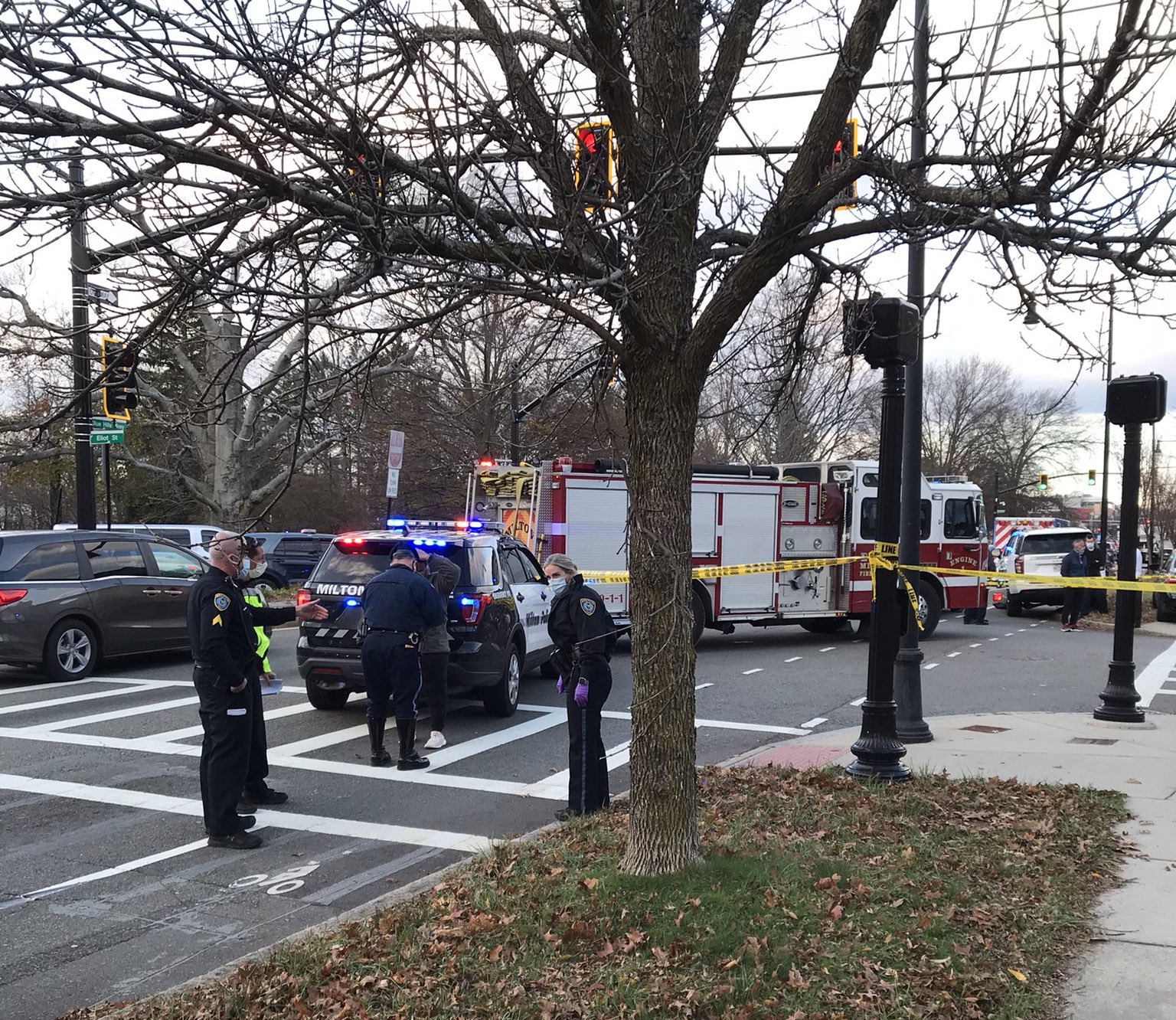
The scene of a fatal crash in Milton near Mattapan Square on Nov. 17, 2020, after an Eversource driver struck and killed a victim who was riding a bicycle on Blue Hill Avenue. Courtesy of the Massachusetts State Police.
The federal Department of Transportation is talking about radically changing federal roadway safety policy after new stats showed the largest six-month increase in roadway fatalities ever recorded by the agency.
A shocking 18.4-percent more people died on U.S. roads in the first six months of 2021 compared to the same period last year — a death toll that represents roughly 20,160 lives lost and innumerable bereaved families, according to early estimates released on Thursday by the US DOT. The department did not reveal how many vulnerable road users were killed in that surge, but if trends mirror the historic 22-percent spike in pedestrian fatalities between 2019 and 2020, advocates fear it may have been one of the deadliest years ever for people outside motor vehicles, too.
Today @USDOT announced that the nation is on track to lose 40,000 Americans to traffic crashes this year. This is a crisis, and it is preventable.
— Secretary Pete Buttigieg (@SecretaryPete) October 28, 2021
New research that accompanied the estimates suggests that the surge was largely attributable to increased rates of speeding, which spiked on quarantine-emptied roads but remained endemic even as Americans returned to their driving commutes. Experts believe that the rise of remote work may have permanently shifted U.S. travel patterns, softening rush-hour gridlock but spreading faster-than-usual traffic throughout the day.
New commuting patterns may be here to stay, but Transportation Secretary Pete Buttigieg stressed that the rising death toll cannot become America's new normal.
In a press release announcing the death toll, Sec. Buttigieg said that "we cannot and should not accept these fatalities as simply a part of everyday life in America.”
The new fatality numbers were saddening, but not surprising, to sustainable transportation advocates, who called for urgent reforms following similar estimates from the National Safety Council in early September.
But some expressed shock at just how seriously the agency appeared to be taking the news this time around — including the promise of "the Department’s first ever National Roadway Safety Strategy, [which will include] a comprehensive set of actions to significantly reduce serious injuries and deaths on our nation’s roadways," to be revealed in January 2022.
Details on what that strategy will entail and how state and local leaders will be held accountable for implementing it remain scarce, but the agency promised that it "will be rooted in the Safe System Approach principles and identifies significant actions the Department will take to help ensure: Safer People, Safer Roads, Safer Vehicles, Safer Speeds, and Post-Crash Care."
That would be a stark contrast to the DOT's current approach, which NACTO Executive Director Corinne Kisner says "often place[s] other priorities — like the unfettered flow of vehicles — above or on par with saving lives."
Incorporating the safe systems philosophy into national policy has been a central goal of the street safety advocacy community for years, and has become a core recommendation of forward thinking transportation leaders over the last few years. The philosophy made the National Transportation Safety Board's "Most Wanted List" for the first time last April.
The press release also quoted Acting FHWA Administrator Stephanie Pollack, formerly the Secretary of MassDOT, who promised that her agency "is committed to a Safe System Approach and to working closely with local and state transportation agencies to make every road that is designed or built with federal funds safe for everyone who uses it.”
While at MassDOT, Pollack established new funding programs for complete streets projects, and implemented a new roadway engineering directive that will require sidewalks and bike facilities on most state-funded roadway construction projects.
Of course, a Vision Zero commitment doesn't always mean real, Vision Zero results — as countless communities across America have found as their local efforts to end road deaths floundered in the hands of state and local leaders who were slow to implement proven life-saving strategies with the urgency and funding they demand.
That's why safety leaders are already putting the pressure on the feds to deliver a plan with real teeth — and stressing that they can, and must act now to save lives before this year gets any bloodier.
The Federal Highway Administration, for instance, already has the power to revise the Manual of Uniform Traffic Control Devices to prioritize the safety of all road users over the convenience of drivers. And there's nothing stopping the National Highway Traffic Safety Administration from updating the New Car Assessment Program to rate the safety of every car model for the people outside the vehicle a driver might strike, rather than focusing exclusively on vehicle occupants.
But advocates say the real question is whether Buttigieg's new strategy will be enough to counteract the bad safety policy embedded in the impending surface transportation reauthorization bill — if the wave of asphalt promised to crash down on American cities doesn't crush Buttigieg's Vision Zero aspirations first.
"Secretary Buttigieg and his team have their work cut out for them," added Kisner. "The infrastructure bill, when it passes, will continue to distribute funds to states with few strings attached – money that states have traditionally used to widen and expand roadways without city input, often making the most dangerous streets within a city even less safe. USDOT must hold states to account by closely tracking these funds, scrutinizing projects that will result in expanded lane miles or higher vehicle speeds, and awarding grants to projects that can demonstrably improve safety for all road users."
Kisner says the whittled-down budget reconciliation measure could help, too — if Democrats can get it across the finish line with its sustainable transportation provisions intact. So far, key programs to boost transit and e-bike adoption appear to be intact, and advocates are hopeful they might survive the impending negotiations, even if the future of the bill itself remains uncertain.
"Paired with the inspired transportation programs in the Build Back Better Act, there is hope that federal transportation programs will finally turn the corner from funding ever-wider, more deadly roads, to a holistically-planned transportation system that connects communities, corrects inequities, and saves lives," Kisner stressed. "NACTO and our cities look forward to working with the Secretary to shape USDOT’s forthcoming National Roadway Safety Strategy, and ensure that the proven methods for making our streets safer get the focus we need to stem this increasingly deadly crisis.
StreetsblogMASS editor Christian MilNeil contributed additional reporting to this story.
Stay in touch
Sign up for our free newsletter

